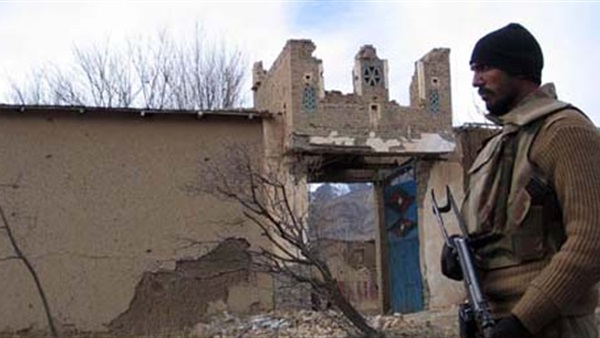Pakistani Taliban raising money through extortion

The branch of the Taliban movement in Pakistan depends on
financial extortion to raise money.
The branch imposes royalties on people living in areas close
to the shared border between Pakistan and Afghanistan.
It also makes threats and sometimes murders people to coerce
them to pay the amounts of money it wants.
The Taliban usually gets money from people in the border
areas through intermediaries.
The people subject to the movement's extortion pay money
several times every year.
Afghanistan has become an open haven for the fighters of the
Pakistani movement, especially after the US-led coalition chased them there.
Financial extortion
Extortion is a means of financing adopted by the Pakistani
movement. This means allows the movement to undermine the confidence of the
population in local institutions. It also preys on between 80 and 95% of
wealthy residents in the region where some parliamentarians were attacked after
they refused to pay money, while others stopped visiting their constituencies
for fear of being attacked.
Attempts by the Pakistani branch of the Taliban to extort
money in the border area between Pakistan and Afghanistan have increased since
the mother movement took over Afghanistan in August 2021.
Tribal areas in north-western Pakistan on the border with
Afghanistan are the cradle of the Pakistani Taliban movement.
The movement killed tens of thousands of civilians and
members of the Pakistani security forces in less than a decade.
It reached the peak of its influence between 2007 and 2009,
when it controlled the Swat Valley, around 140 kilometres north of Islamabad.
It imposed its strict version of Islamic law in the valley.
There are old differences between the Afghan and Pakistani
Taliban movements.
The Afghan Taliban repeatedly stressed that it would not
allow terrorist groups to operate on its territory. However, the first
indicator of an extortion attempt by the Pakistani Taliban is the caller ID
number that begins with the Afghan code 0093, followed by a text message
dispelling any confusion, or a voice message in Pashtun with a Pakistani
accent.
After its strength declined due to the bombing of American
marches, internal divisions and the accession of elements of it to the
terrorist organization ISIS, the movement was expelled from the tribal areas
during a large-scale operation carried out by the Pakistani army in 2014.
Nevertheless, it began to regain strength in the summer of
2020, with the accession of dissident factions to it.
The real turning point happened when the Afghan movement
returned to power in Afghanistan.
The Pakistani Taliban, which lost a large part of the
popular support it enjoyed locally before 2014, claims that this extortion
system is the work of criminals, using its name.
Nonetheless, a local intelligence official confirmed that
the Pakistani movement is behind the threat, as residents of the Swat Valley
fear the return of dark days, and have expressed opposition to the movement by
organizing several demonstrations in recent weeks.
Observers stressed that Afghanistan has since become an open
haven for the fighters of the Taliban Pakistan, after the US-led coalition
chased them there.
They now have full freedom of movement in the neighbouring
country.
The same observers noted that this is one of the reasons
that led to the increase in attacks by the Pakistani movement.





